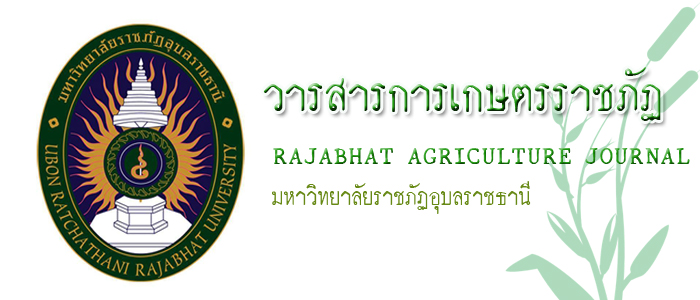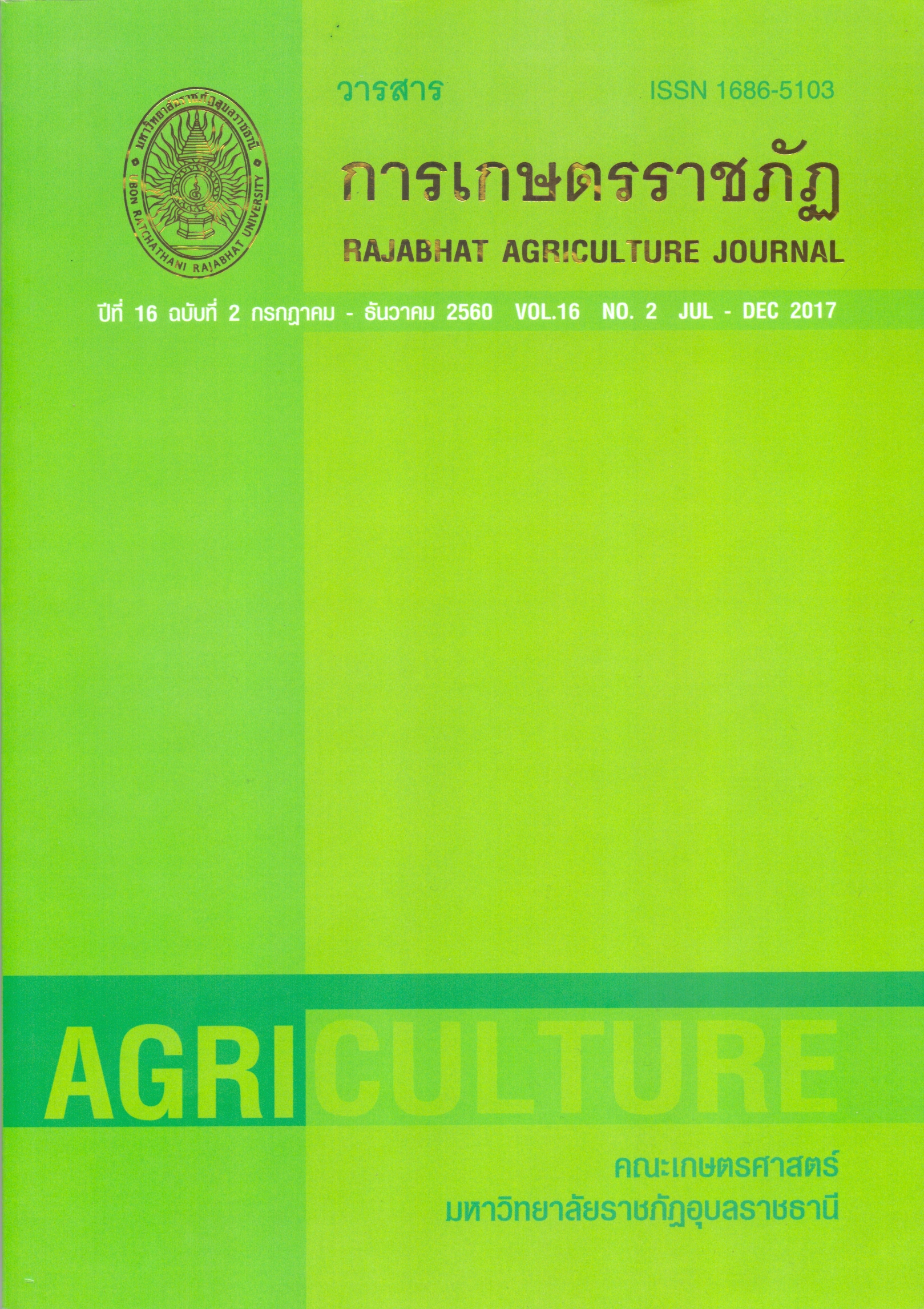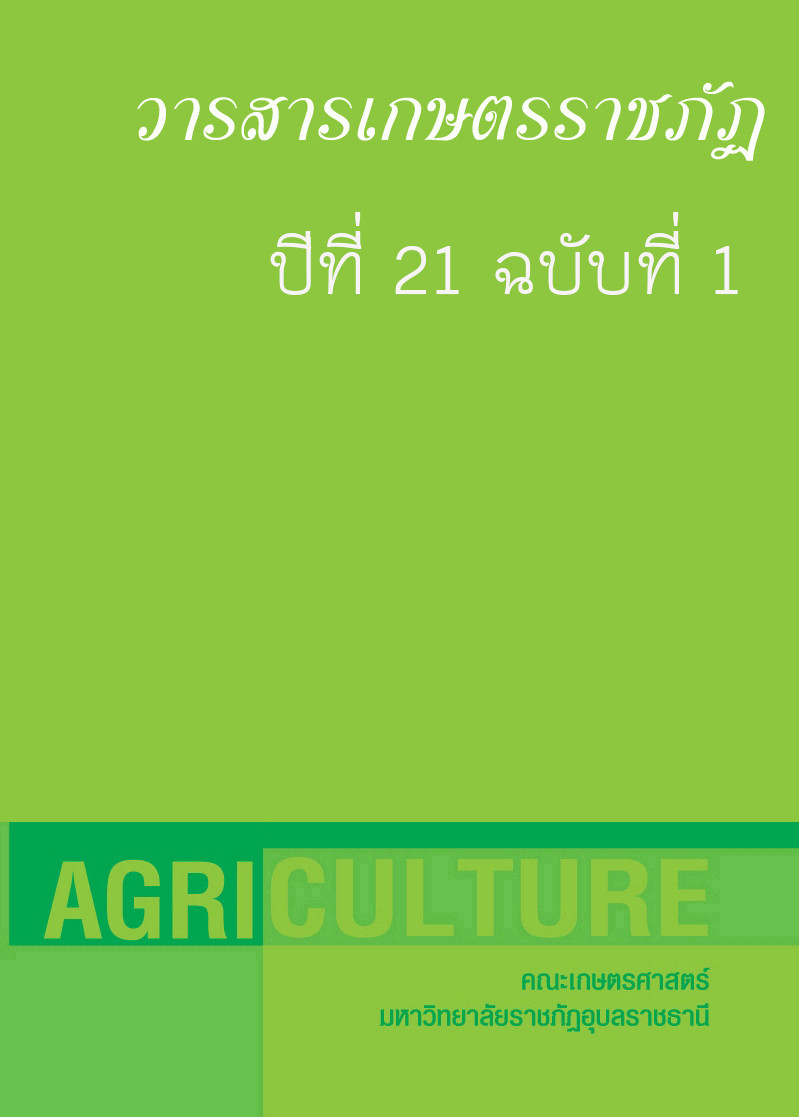
การศึกษาอัตราปุ๋ยเคมีต่อการเจริญเติบโตและผลผลิตของข้าวหอมนิล ในนาแบบเปียกสลับแห้งและนาชลประทาน

การศึกษาอัตราปุ๋ยเคมีต่อการเจริญเติบโตและผลผลิตของข้าวหอมนิล ในนาแบบเปียกสลับแห้งและนาชลประทาน
Study of Chemical Fertilizer Rate on Growth and Yield of Hom Nin Rice Variety Under Alternate Wetting and Drying Condition and Irrigated Condition
--------------------------------------------
โดย นาง โดม หาญพิชิตวิทยา1 Dome Harnpichitvitaya1
ประเภท : บทความวิจัย
ปีที่ตีพิมพ์ : วารสารเกษตรราชภัฏ ปีที่ 16 ฉบับที่ 2
ผู้เข้าชม 0
วันที่ปรับปรุงข้อมูล : 2018-05-25 21:30:52
บทคัดย่อ
การศึกษาอัตราการใส่ปุ๋ยเคมีสูตร 16-16-8 ที่มีต่อการเจริญเติบโตและผลผลิตข้าวหอมนิลในสภาพนาเปียกสลับแห้งและในสภาพนาชลประทาน พบว่า ปุ๋ยเคมีสูตร 16-16-8 อัตรา 45 กิโลกรัมต่อไร่ มีผลทำให้ต้นข้วมีความสูงเฉลี่ยของต้น จำนวนรวงต่อกอ ผลผลิตเมล็ดข้าวเฉลี่ย และน้ำหนักเฉลี่ย 100 เมล็ด มีค่าสูงที่สุดเป็น 91 เซนติเมตร 16 รวงต่อกอ 580 กิโลกรัมต่อไร่ และ 2.74 กรัมตามลำดับ เปอร์เซ็นต์เมล็ดลีบน้อยที่สุดคือ 3.95 เปอร์เซ็นต์ และพบว่ามีความแตกต่างกันทางสถิติอย่างมีนัยสำคัญยิ่ง (p≤0.01) รองลงมา ได้แก่ การใช้ปุ๋ยเคมีสูตร 16-16-8 อัตรา 30 กิโลกรัมต่อไร่ สำหรับการใส่ปุ๋ยเคมีสูตร 16-16-8 อัตรา 15 กิโลกรัมต่อไร่ ถือเป็นการใส่อัตราที่น้อยเกินไป เนื่องจากการเจริญเติบโต และการให้ผลผลิตของข้าวมีค่าน้อยที่สุด และไม่แตกต่างทางกันในสถิติกับการไม่ใส่ปุ๋ย นอกจากนี้ยังพบว่า การจัดการน้ำแบบเปียกสลับแห้งยังสามารถลดปริมาณการใช้น้ำในการเพาะปลูกข้าว เมื่อเปรียบเทียบกับการให้น้ำแบบท่วมขังหรือแบบดั้งเดิม และให้ผลผลิตข้าวเฉลี่ยเป็น 471 กิโลกรัมต่อไร่ และ 410 กิโลกรัมต่อไร่ตามลำดับ และมีความแตกต่างกันทางสถิติอย่างมีนัยสำคัญยิ่ง คำสำคัญ: ข้าวหอมนิล นาเปียกสลับแห้ง นาชลประทาน
